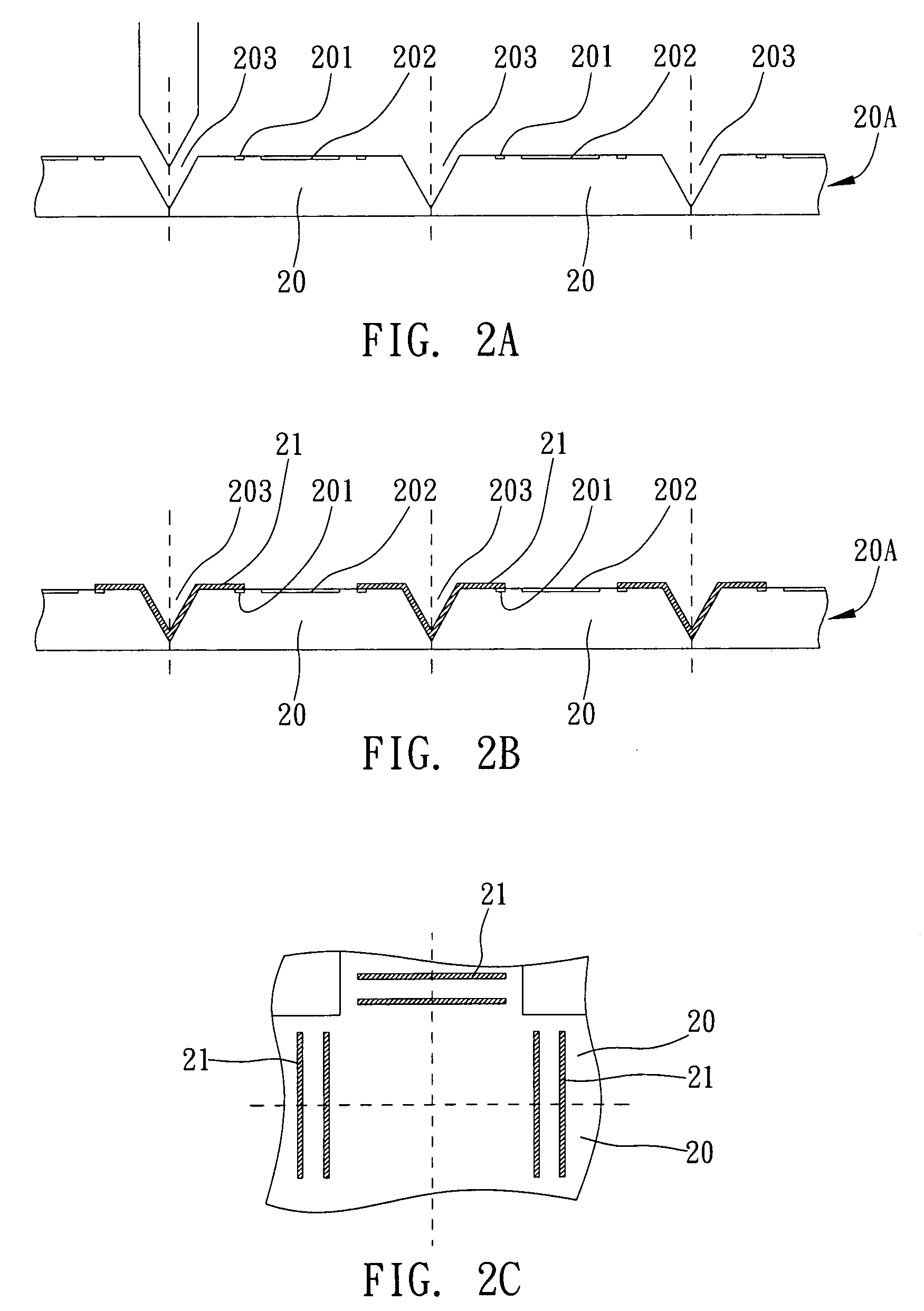Sensor semiconductor device and manufacturing method thereof
a technology of semiconductor devices and manufacturing methods, applied in semiconductor/solid-state device manufacturing, semiconductor devices, electrical equipment, etc., can solve the problems of affecting and affecting the alignment of slant grooves to be formed, so as to improve the reliability of traces
- Summary
- Abstract
- Description
- Claims
- Application Information
AI Technical Summary
Benefits of technology
Problems solved by technology
Method used
Image
Examples
Embodiment Construction
[0018]The following specific embodiments are provided to illustrate the present invention. Persons skilled in the art can readily gain insight into other advantages and features of the present invention based on the contents disclosed in this specification.
[0019]FIGS. 2A to 2I are schematic views showing the first preferred embodiment of a sensor semiconductor device and a manufacturing method thereof in accordance with the present invention. Mass production of the sensor semiconductor device of the present invention is described as follows.
[0020]Referring to FIG. 2A, a wafer 20A having a plurality of sensor chips 20 is provided, wherein each of the sensor chips 20 has an active surface and a non-active surface opposite thereto, a sensing area 202 and a plurality of bond pads 201 are provided on the active surfaces, and a plurality of grooves 203 are formed between the bond pads 201 on the active surfaces of adjacent ones of the sensor chips 20. The cross-section of the grooves 203 ...
PUM
 Login to View More
Login to View More Abstract
Description
Claims
Application Information
 Login to View More
Login to View More - R&D
- Intellectual Property
- Life Sciences
- Materials
- Tech Scout
- Unparalleled Data Quality
- Higher Quality Content
- 60% Fewer Hallucinations
Browse by: Latest US Patents, China's latest patents, Technical Efficacy Thesaurus, Application Domain, Technology Topic, Popular Technical Reports.
© 2025 PatSnap. All rights reserved.Legal|Privacy policy|Modern Slavery Act Transparency Statement|Sitemap|About US| Contact US: help@patsnap.com



